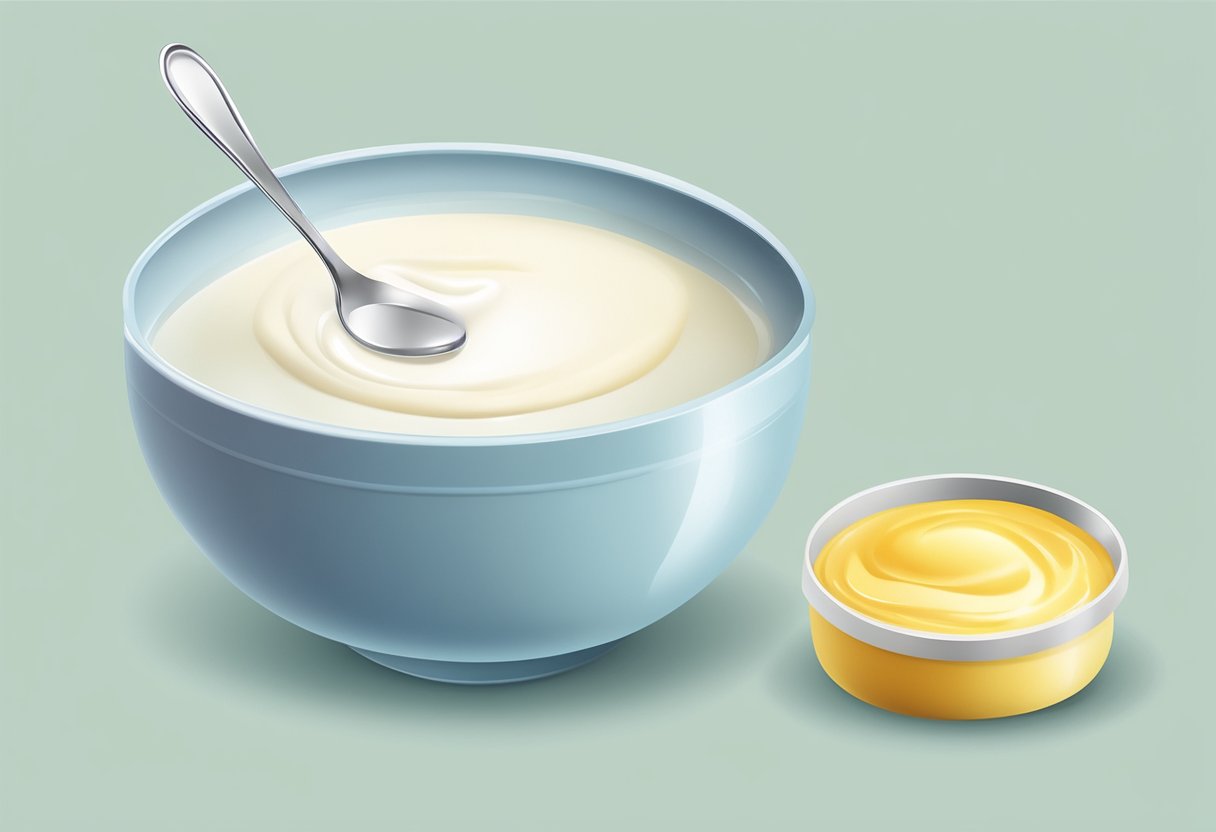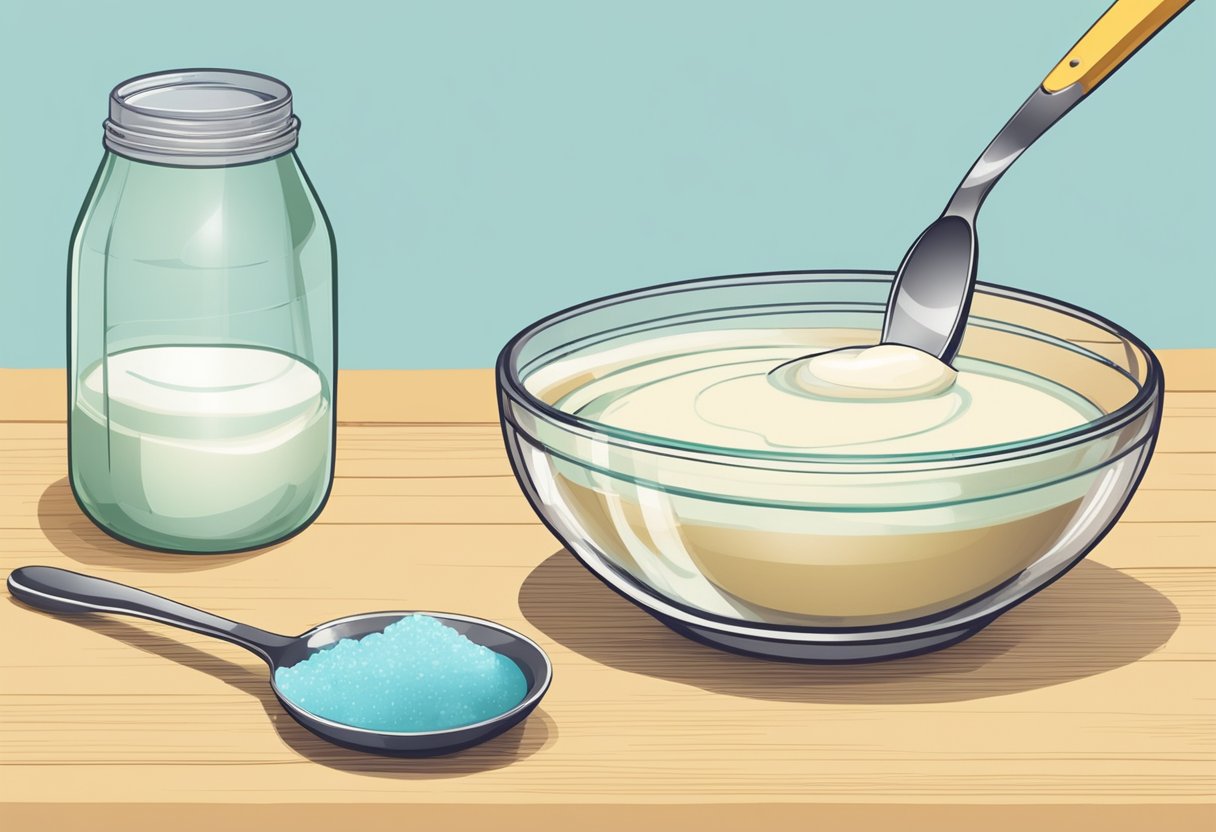Gelatin face masks have become increasingly popular in recent years due to their numerous benefits for the skin. They are known to help reduce the appearance of wrinkles, fine lines, and acne scars, as well as improve skin elasticity and hydration. One of the most popular types of gelatin face masks is the milk and gelatin face mask.

To make a milk and gelatin face mask, you will need unflavored gelatin and milk. Gelatin is a protein derived from collagen and is known to help improve skin elasticity and hydration. Milk, on the other hand, contains lactic acid which helps to exfoliate dead skin cells and promote cell turnover. Together, these two ingredients make a powerful combination for achieving soft, smooth, and glowing skin.
In this article, we will provide step-by-step instructions on how to make a milk and gelatin face mask at home. We will also discuss the benefits of using this type of face mask and provide some tips on how to customize the recipe to suit your specific skin type. So, if you’re looking for an easy and effective way to improve your skin’s appearance and health, keep reading to learn how to make a milk and gelatin face mask.
Benefits of Gelatin and Milk Face Masks

Gelatin and milk face masks are known for their numerous benefits for the skin. Here are some of the benefits of using a gelatin and milk face mask:
-
Exfoliates the skin: The lactic acid in milk helps to exfoliate the skin and remove dead skin cells, leaving the skin looking brighter and smoother.
-
Hydrates the skin: Gelatin is known for its hydrating properties, which can help to plump up the skin and reduce the appearance of fine lines and wrinkles.
-
Reduces inflammation: Milk contains anti-inflammatory properties that can help to reduce redness and inflammation in the skin.
-
Tightens pores: The proteins in milk can help to tighten the pores and reduce the appearance of large pores.
-
Improves skin texture: The combination of gelatin and milk can help to improve the overall texture of the skin, leaving it looking smoother and more even.
Overall, a gelatin and milk face mask is a great way to improve the health and appearance of your skin. It is easy to make at home and can be customized to suit your specific skin type and needs.
Preparation of Ingredients

Gelatin Types and Selection
Gelatin is a protein that is derived from collagen, which is found in animal bones and connective tissue. When it comes to selecting the right type of gelatin for your face mask, it is important to consider the quality and purity of the product. Gelatin comes in two types: animal-based and plant-based. Animal-based gelatin is made from the skin, bones, and connective tissue of animals, while plant-based gelatin is made from seaweed.
When choosing a gelatin for your face mask, it is important to look for a high-quality product that is free from additives and preservatives. It is also important to consider any dietary restrictions or allergies, as some people may be allergic to animal-based gelatin.
Choosing the Right Milk
Milk is a common ingredient in gelatin face masks, as it helps to moisturize and nourish the skin. When selecting the right milk for your face mask, it is important to consider the fat content and any allergies or sensitivities.
Whole milk is a good choice for those with dry or sensitive skin, as it contains a higher fat content that helps to moisturize and nourish the skin. Skim milk is a good choice for those with oily or acne-prone skin, as it contains less fat and is less likely to clog pores.
It is important to note that those with lactose intolerance or dairy allergies should avoid using milk in their face masks. In these cases, alternative milks such as almond milk or coconut milk can be used as a substitute.
Creating the Face Mask

Mixing the Ingredients
To create a gelatin and milk face mask, the first step is to mix the ingredients. In a small bowl, combine 1 tablespoon of unflavored gelatin powder with 1 tablespoon of milk. Stir the mixture until it forms a thick paste.
Heating the Mixture
Next, heat the mixture in the microwave for 10 seconds. This will help to dissolve the gelatin powder and create a smooth consistency. Stir the mixture again and let it cool for a few minutes.
Once the mixture has cooled down slightly, it is ready to be applied to the face. Using clean fingers or a brush, apply a thin layer of the mask to the face, avoiding the eye and mouth areas. Leave the mask on for 10-15 minutes or until it has completely dried.
Overall, creating a gelatin and milk face mask is a simple and cost-effective way to improve the appearance of the skin. This mask is known for its ability to help tighten and firm the skin, leaving it looking smoother and more youthful.
Application Process

Cleansing Your Face
Before applying the gelatin and milk face mask, it is important to cleanse your face thoroughly to remove any dirt, oil, or makeup. Use a gentle cleanser and warm water to wash your face and pat it dry with a clean towel.
Applying the Mask
To make the gelatin and milk face mask, mix one tablespoon of unflavored gelatin with two tablespoons of milk in a microwave-safe bowl. Heat the mixture in the microwave for 10-15 seconds until it becomes a thick paste. Let it cool for a few seconds before applying it to your face.
Using a clean brush or your fingers, apply the mask to your face in a thin, even layer. Avoid the eye area and any areas with hair. Leave the mask on for 15-20 minutes or until it has completely dried. As the mask dries, it will tighten and may feel slightly uncomfortable.
Once the mask has dried, gently peel it off starting from the bottom and working your way up. Rinse your face with warm water to remove any residue and pat it dry with a clean towel. Follow up with your favorite moisturizer to keep your skin hydrated and soft.
It is recommended to use this gelatin and milk face mask once a week to help exfoliate and brighten your skin. However, if you experience any irritation or discomfort, discontinue use and consult with a dermatologist.
Mask Setting Time

After applying the gelatin and milk face mask, it is important to allow it to set before removing it. The setting time for this mask can vary depending on the thickness of the application and the specific recipe used.
Typically, the mask should be left on for 15-20 minutes or until it has completely dried and hardened. During this time, it is recommended to avoid making any facial expressions or movements to prevent cracking or flaking of the mask.
To ensure the mask sets properly, it is important to apply it evenly and in a thin layer. This can be achieved by using a brush or spatula to spread the mixture across the face.
Once the mask has set, it can be removed by gently peeling it off in an upward motion. It is important to be gentle when removing the mask to avoid any irritation or damage to the skin.
Overall, the setting time for a gelatin and milk face mask is relatively short and easy to manage. By following the recommended time and application guidelines, users can achieve a refreshing and rejuvenating facial treatment in the comfort of their own home.
Removal and Aftercare

Peeling Off the Mask
Once the gelatin and milk face mask has dried completely, it is time to remove it. Start at the edges of the mask and gently peel it off in an upward motion. Avoid pulling the mask too quickly or forcefully, as this can cause discomfort or irritation. If the mask is difficult to remove in certain areas, use a damp cloth to gently loosen it before continuing to peel.
Post-Mask Skin Care
After removing the gelatin and milk face mask, it is important to take care of the skin properly. First, rinse the face with cool water to remove any remaining mask residue. Then, apply a gentle moisturizer to the skin to soothe and hydrate it. Avoid using any harsh or abrasive products on the skin for at least 24 hours after using the mask, as this can cause further irritation.
It is also recommended to use the gelatin and milk face mask no more than once a week, as overuse can cause the skin to become overly dry or irritated. Additionally, it is important to note that while the mask can help to remove blackheads and other impurities, it is not a substitute for a proper skincare routine. Regular cleansing, exfoliation, and moisturizing are still necessary for maintaining healthy, glowing skin.
Common Mistakes to Avoid

When making a gelatin and milk face mask, there are a few common mistakes that people tend to make. Here are some tips to avoid these mistakes and ensure that your face mask turns out perfectly:
1. Using too much or too little gelatin
One of the most common mistakes when making a gelatin and milk face mask is using too much or too little gelatin. If you use too much gelatin, the mask will be too thick and difficult to apply. On the other hand, if you use too little gelatin, the mask will be too runny and won’t stick to your face properly.
To avoid this mistake, it’s important to measure the gelatin carefully and follow the recipe instructions closely. Use a tablespoon to measure the gelatin and make sure you use the right amount for the recipe you are following.
2. Heating the mixture for too long
Another mistake people make when making a gelatin and milk face mask is heating the mixture for too long. If you overheat the mixture, the gelatin will break down and the mask won’t set properly.
To avoid this mistake, only heat the mixture for the amount of time specified in the recipe. Usually, this is around 10-15 seconds in the microwave. If you don’t have a microwave, you can heat the mixture on the stove over low heat until the gelatin has dissolved.
3. Applying the mask too thickly
Finally, it’s important not to apply the mask too thickly. If you apply the mask too thickly, it will take longer to dry and will be more difficult to peel off. It may also be more likely to break and leave bits of mask on your face.
To avoid this mistake, apply the mask in a thin, even layer using a brush or your fingers. Make sure to avoid the eye area and any areas of broken or irritated skin. Leave the mask on for the amount of time specified in the recipe, usually around 10-15 minutes, or until it is completely dry.
By avoiding these common mistakes, you can ensure that your gelatin and milk face mask turns out perfectly every time.
Frequently Asked Questions

What are the steps to create a gelatin and milk face mask at home?
To create a gelatin and milk face mask at home, one needs to follow a few simple steps. Firstly, mix one tablespoon of unflavored gelatin with two tablespoons of milk in a microwave-safe bowl. Microwave the mixture for 10-15 seconds or until it becomes a thick paste. Let it cool for a few minutes before applying it to your face. Apply the mixture onto your face and let it dry for 15-20 minutes. Once the mask is dry, peel it off and rinse your face with lukewarm water.
Can a gelatin and milk face mask help in removing blackheads?
Yes, a gelatin and milk face mask can help in removing blackheads. The mask works by adhering to the skin and pulling out impurities from the pores. The milk in the mask helps to nourish and hydrate the skin, while the gelatin helps to tighten the pores and remove blackheads.
What are the benefits of using a gelatin face mask for the skin?
Gelatin face masks have several benefits for the skin. They help to remove impurities from the pores, which can help to prevent breakouts and blackheads. They also help to tighten the pores, which can make the skin appear smoother and more youthful. Gelatin face masks can also help to hydrate and nourish the skin, leaving it feeling soft and supple.
How can one achieve glowing skin with a gelatin face mask?
To achieve glowing skin with a gelatin face mask, one can add a few drops of lemon juice or honey to the mask. Lemon juice contains vitamin C, which helps to brighten the skin and reduce the appearance of dark spots. Honey is a natural humectant, which helps to hydrate and nourish the skin. The combination of these ingredients with the gelatin and milk can help to achieve glowing skin.
Are there any side effects associated with using a gelatin face mask?
Gelatin face masks are generally safe to use, but there are a few potential side effects to be aware of. Some people may experience redness or irritation after using the mask, especially if they have sensitive skin. It is important to do a patch test before using the mask on your face to ensure that you are not allergic to any of the ingredients.
Can a gelatin and milk face mask be used for hair removal?
No, a gelatin and milk face mask is not suitable for hair removal. The mask is designed to be used on the face and can help to remove impurities from the pores. It is not effective for hair removal and may cause irritation if used on other parts of the body.

